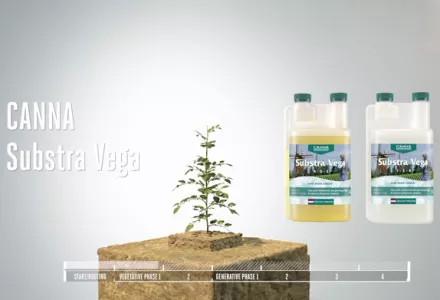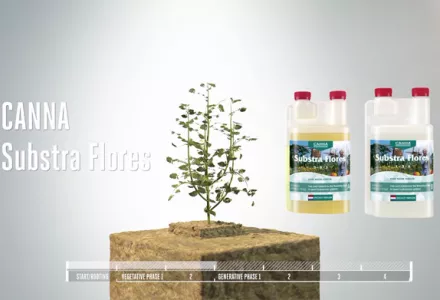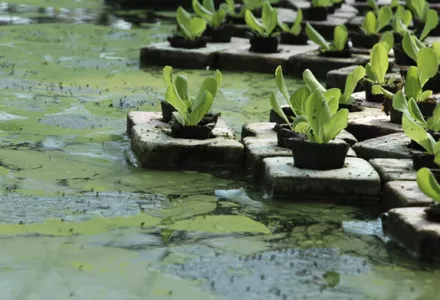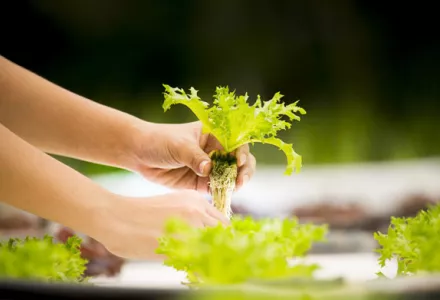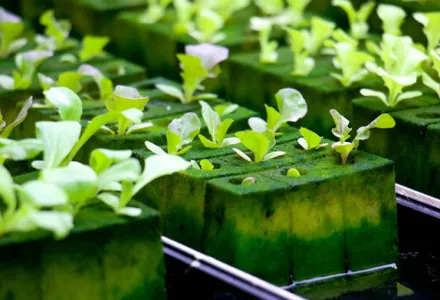The fertilizers in the CANNA SUBSTRA range are available in two versions, for hard water and for soft water. If the hardness of your water is 60-80 mg/L available Calcium or more, use the hard water variant. If the hardness of your water is less than this, then the soft water variant is recommended.
Your local water company will be able to tell you the exact hardness of your tap water. In some areas the quality of the water changes regularly, so if you live in one of these areas you would be wise to purchase your own water testing set.

It is the exact combination of minerals dissolved in water, together with the water’s pH and temperature that determines hardness. An exact scale does not adequately describe hardness. Hardness corresponds roughly with ranges of mineral concentrations:
- Soft: 0 - 20 mg/L as calcium
- Slightly hard: 40 - 60 mg/L as calcium
- Hard: 80 - 120 mg/L as calcium
- Moderately soft: 20 - 40 mg/L as calcium
- Moderately hard: 60 - 80 mg/L as calcium
- Very Hard >120 mg/L as calcium
Soaking rock wool before use
Before you put any plants in your new rock wool slab (or large blocks) you must ensure that it is thoroughly wet, this process is known as pre-soaking. You should soak your rock wool before use for two reasons:
- The first reason is to optimize the capillary working of the rock wool. If there are dry patches in the slab or block, these will remain dry during cultivation, and the slab will never reach its theoretical maximum water-retention capacity. Consequently the plants will be less able to absorb sufficient water and nutrients. A chamois works in the same way: when it is bone dry it is difficult to get it properly wet; once it is a little bit wet then it can absorb much more water. Incorrect soaking, or worse still, no pre-soak at all, can have disastrous effects: it might even mean that many of your cuttings die within the first few days.
- Secondly because rock wool remains an inert growing medium, it contains nothing to provide a warm welcome for your precious cuttings. By a warm welcome we are referring to the root environment with an EC of about 1.3 and a pH value of 5.6. If rock wool is soaked with ordinary tap water, depending on your water supply, the EC and the pH will be about 0.5 and 7.5 respectively; not really an ideal start for young plants!
If the rock wool has not been ‘buffered’ or washed thoroughly, the pH can come in well over 7.5 and also proves disastrous to any plant. These types of rock wool must be conditioned prior to use.
We recommend soaking the starting blocks a few days before you soak the slabs; the roots of the plants must have grown through the blocks before you can start with the slabs. So you see, slabs are only used once the root balls of all the plants are sufficiently developed but not overdeveloped.
The initial soaking values for the blocks and slabs are the same; an EC of about 1.3 and a pH of about 5.6. In this example the starting point is tap water that has an EC of about 0.5 and a pH value of about 7.3. These values can be determined with pH and EC meters, which are an indispensable aid to growers cultivating on rock wool. For your pre-soak, you will need to make a solution of water with an EC of 1.3 and a low pH – adjust the pH of your soaking solution to 5.1. NOTE: You will only need to adjust the pH so drastically once!
Next, make a hole in the plastic covering the rock wool slab, just large enough to fit a garden hose through. Attach the garden hose to an immersion pump and fill the rock wool slabs with at least 10 litres of this solution. Let the solution stand in the slab for at least 12 hours; preferably 24 to 48 hours.
The EC is fixed, but due to the effect of the water on the rock wool, initially the pH value will drop to about 6.2 only to settle at about 5.8. Rock wool has a continual active influence on the pH value, so it is essential to check it regularly. Now that the slab has soaked for up to 48 hours it’s time to cut a slit in the plastic covering so that the excess water can drain away. Make slits in the bottom of the slab and at the lowest point in the cultivating container.
Continually changing pH in the slab

Before you mix up a tank of nutrient always check the EC and pH of the slabs. You can do this quite easily by extracting some nutrient from the slab with a measuring syringe. The pH in the slab will change continually, so you need to check this regularly and take corrective measures when necessary. We recommend maintaining the pH in the nutrient tank between 5.2 and 6.2.
Once the nutrient in the tank is mixed correctly, you can start feeding your plants. Water the slab sufficiently so that at least 20% drains away from the bottom, through the slits you made earlier. Check regularly whether sufficient water drains away from the container. If not, increase the amount of water given.

Watering and feeding plants: fertigation systems
Fertigation systems are systems that irrigate the plant with water containing the necessary nutrients. Fertigation comes from the words irrigation and fertilization, or giving water and fertilizers simultaneously. Irrigation systems are not new; we find narratives of them in the ancient manuscripts. The practice of adding mineral fertilizers to the irrigation water is only about two hundred years old. There are many different ways of fertigating plants. The most common method used with rock wool slabs is run-to-waste via drippers.
Fertigating via drippers
Sometimes one plant looks poorly compared to the rest. There can be many causes for this, but more often than not the problem is related to one of the drippers releasing a widely differing amount of nutrient solution than the others.

As a result the plant gets either too much or too little water and the amount of nutrients will vary as well. It is advisable to check regularly for blocked drippers and inspect them carefully every time you start a new crop.
A good method is to put each dripper into the neck of an empty bottle and switch on the system. After a while check to see that all bottles have more or less the same amount of liquid: adjust or replace the ones that show a difference greater than 10% more or less.
It is also recommended that the drippers are cleaned after each crop. What should you use to clean your drippers?
Cleaning your drippers
That will depend on the materials they are made of. A simple method to clean your drippers is to add approximately 95 ml pH – (minus) to 1 gallon US of water and to rinse the drippers with this solution.
It is also important to prevent algae from growing in the nutrient tank. Algae will also block the drippers. You can prevent algae from growing by eliminating light from the tank, so use a lid.
Capillary drippers are the least accurate of all drippers; plants seldom get the same amount of water. An excellent solution to this problem is to use drippers that only release water at a certain pressure; pressure compensating and self-closing drippers. In this type of system all drippers start irrigating at the same time and all plants get the same amount of feed water. Another advantage is that a system with pressure compensating drippers does not have to be circular, linear systems work well too. These are the most advanced drippers currently available.
Other drippers available include such drippers as spray stakes that disperse the solution across a wider area and are less susceptible to blockage.
Mixing SUBSTRA nutrients
Half the work is in the preparation. Ensure that you have all the things you will need readily available before you start mixing a tank of nutrient solution. Check you have the right fertilizers ready, Vega or Flores, Hard or Soft and an A and B component. The A and B components have to be mixed in equal volumes.
- Fill a clean nutrient tank with tap water, preferably at about 68-71.6ºF. You can achieve this by running in warm water or by placing a heating element, for example for an aquarium, in the nutrient tank.
- Then, depending on the EC value of the water, add CANNA SUBSTRA A nutrients to the water; stir the solution thoroughly.
- Now measure out exactly the same quantity of CANNA SUBSTRA B nutrients and stir thoroughly again.
- a. Using an EC meter, check whether the solution contains sufficient nutrient salts. If the EC is too low, add more nutrients. If the EC is too high, add more water. Do this carefully and accurately and equally A and B.
- b. The first time you do this note the quantities used, equal amounts of A and B dissolved in tap water. This will make a good starting point for the next time!
- Then check the pH using a pH meter, the pH must be between 5.5 and 5.8. Adjust by adding a small amount of pH up or down to a container of water. This allows for a slower pH movement which should reduce the chance of ‘bouncing’ the pH, a condition that gets out of hand quickly.
- Finally we also recommend leaving the freshly mixed nutrient tank to rest for about an hour before you start to give it to the plants. This delay allows all substances to dissolve evenly and the solution to stabilize.
As the plant gets bigger, it can absorb more nutrients and thus develop even faster. So it is a good idea to increase the amount of nutrients in the water as the plant gets bigger. How much you can give at which stage of the growth is shown in the grow guide below, remember that these amounts are just a guideline. As you become a more experienced grower you can start experimenting to maximize your yield.

